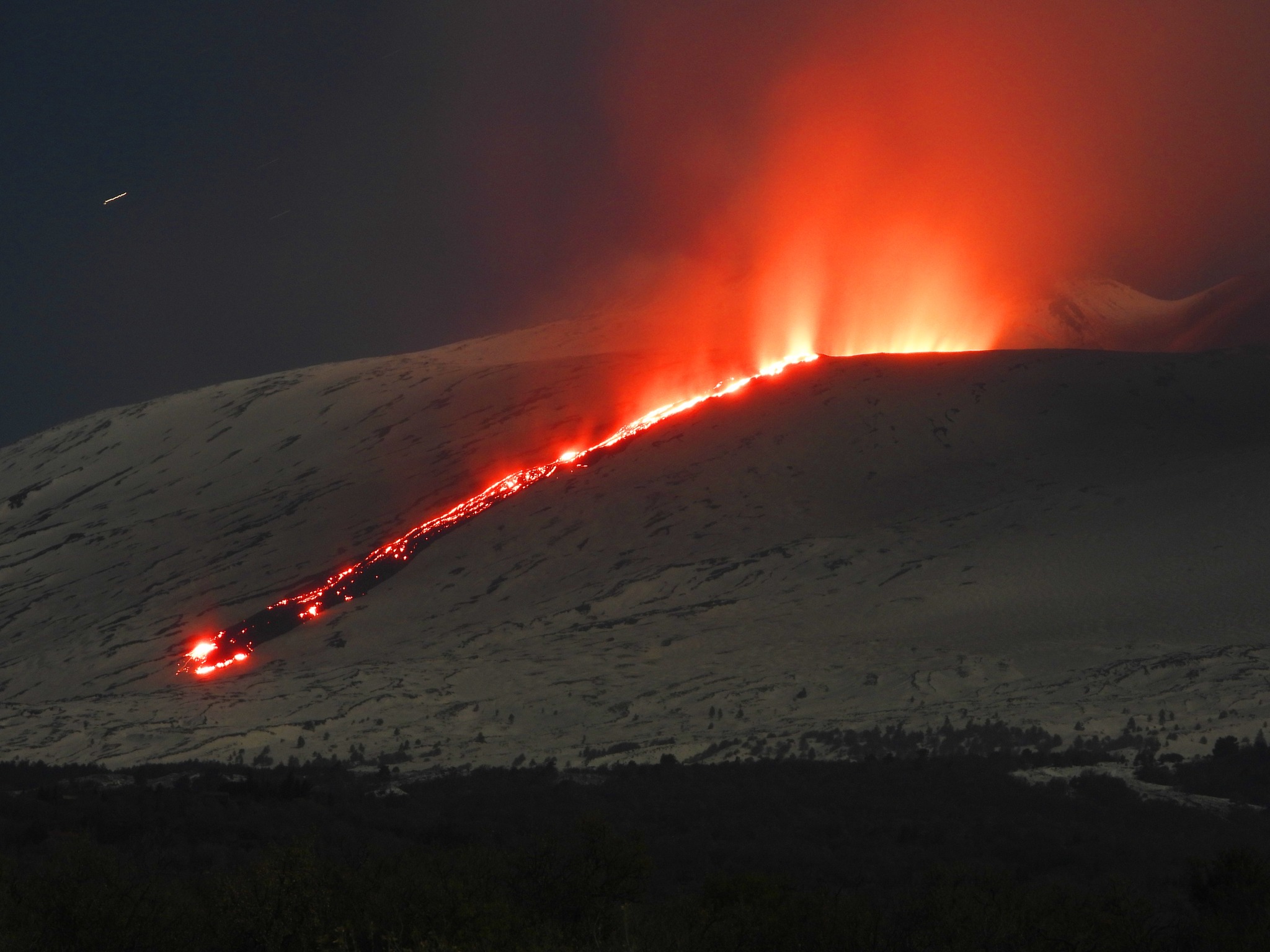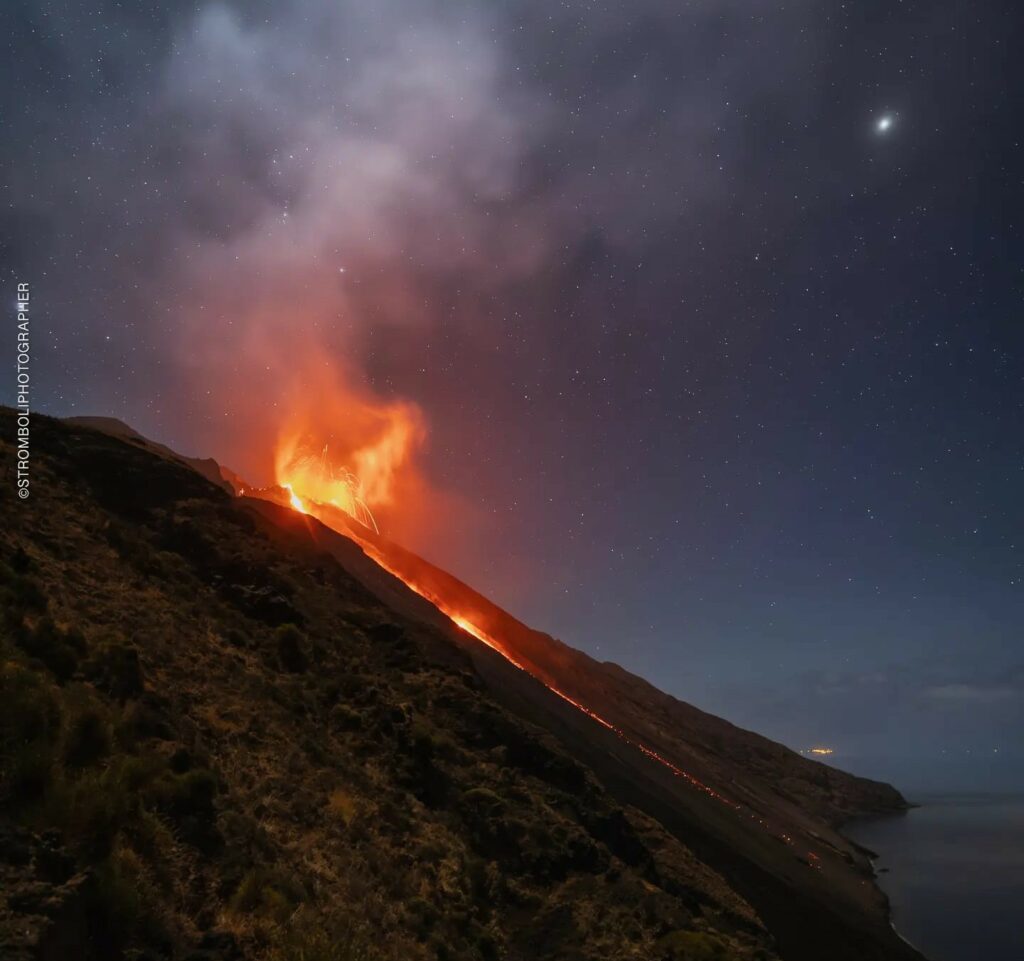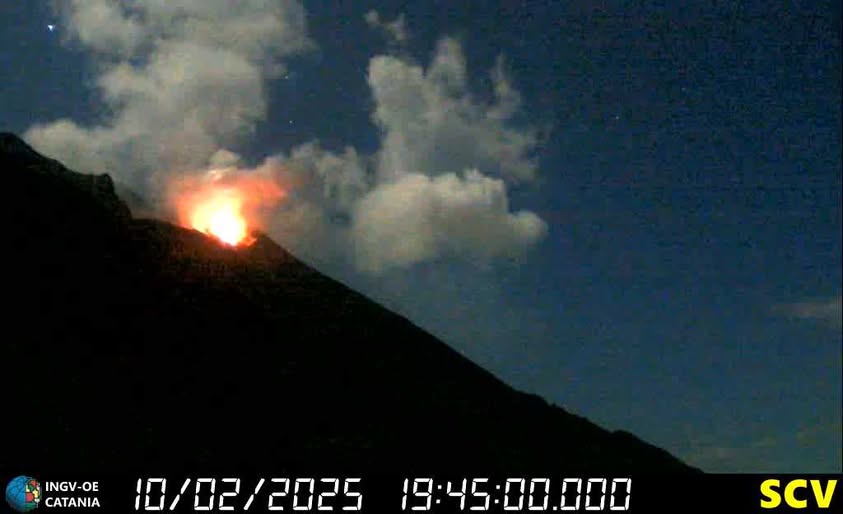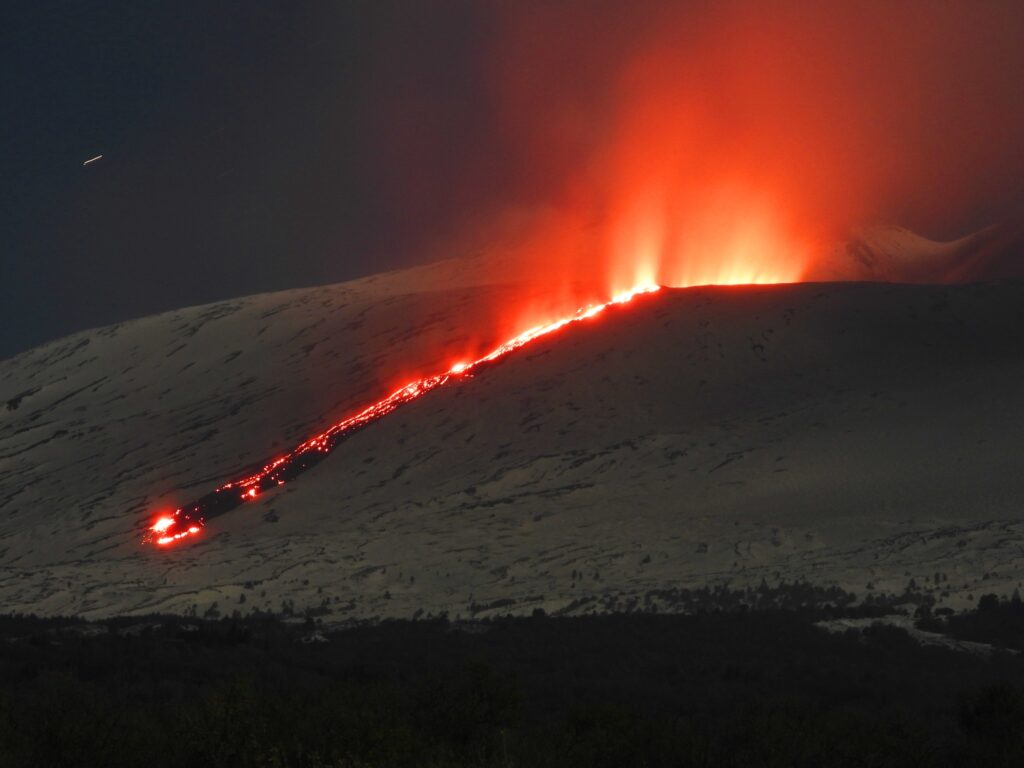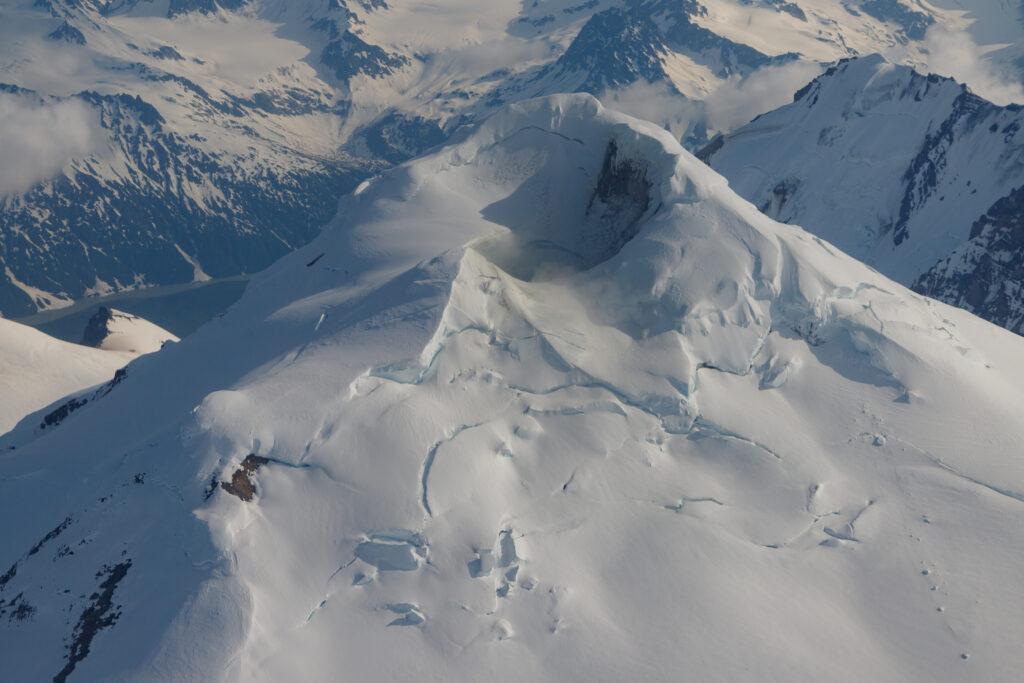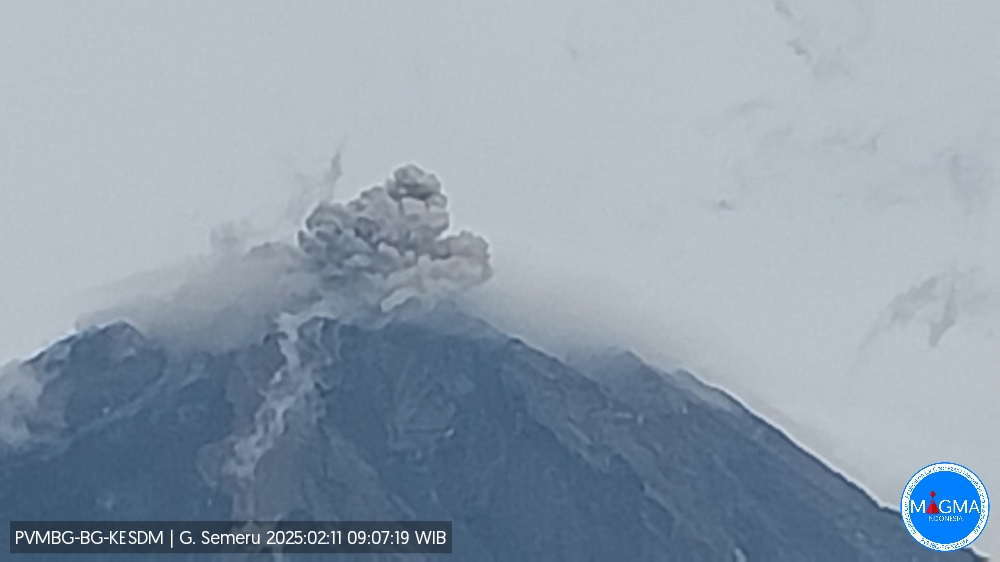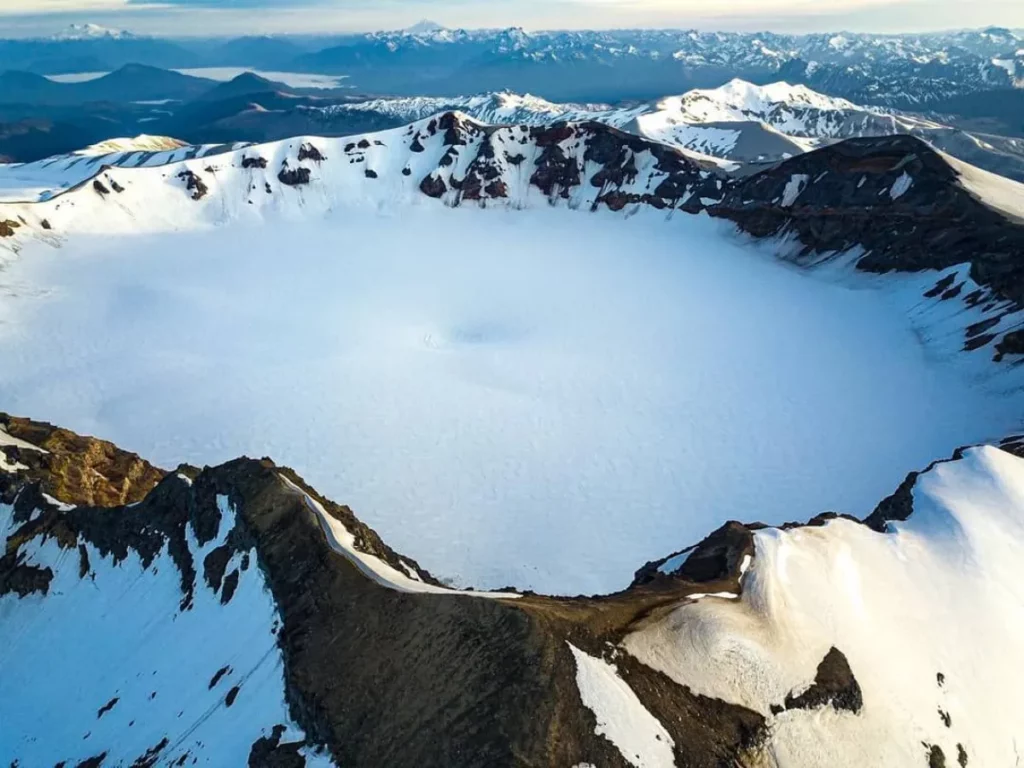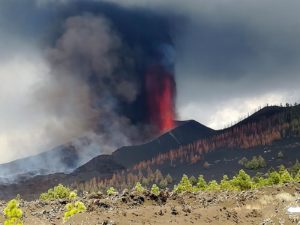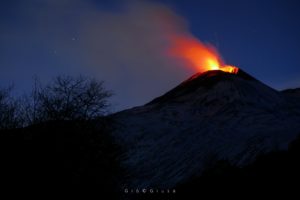February 11 , 2025.
Italy , Stromboli :
Statement on Stromboli activity, 10 February 2025, 15:36 (14:36 UTC) .
The National Institute of Geophysics and Volcanology, Osservatorio Etneo , reports that thanks to the analysis of surveillance camera images, effusive activity from the lava overflow from the North Crater area has been observed since 13:08 GMT. The activity is the consequence of an intensification of spattering at the N2 vent and for the moment the lava flow front is located in the upper part of the Sciara del Fuoco.
At the same time, ordinary explosive activity continues unchanged in the North and Central-South Crater areas.
From a seismic point of view, the temporal evolution of the average amplitude of the volcanic tremor does not present significant variations and the values remain, with modest oscillations, between the average and the low value. No significant changes have been reported in the occurrence rate and amplitude of explosion earthquakes.
Data from the high-frequency inclinometric and GNSS networks do not show significant ground deformations.
Statement on the activity of Stromboli, 10 February 2025, 20:36 (19:36 UTC) .
The National Institute of Geophysics and Volcanology, Osservatorio Etneo, reports that the images from the surveillance cameras show that the lava overflow fed by the North Crater area, reported in the previous press release, has stopped and is cooling down. Ordinary explosive activity at varying rates persists in both crater zones and modest spatter activity in the North Crater zone.
From a seismic point of view, no significant changes are observed compared to the previous announcement. The tremor amplitude is substantially stationary and remains in the low range. No significant changes have been reported in the occurrence rate and amplitude of explosion earthquakes.
Analysis of data from inclinometer and GNSS networks does not reveal significant ground deformations.
Further updates will be communicated shortly.
Source : INGV
Photos : Stromboli stati d’animo / Sebastiano Cannavo ( archive 2023) ; INGV.
Italy / Sicily , Etna:
Lava erupts from a fissure at the southern base of the Bocca Nuova crater on Mount Etna. The flow has reached a length of over 2 km.
It does not pose a danger to uninhabited or cultivated areas. This photo was taken on the evening of February 10, 2025 from Ragalna.
Source et photo : Boris Behncke / INGV.
Alaska , Spurr :
Unrest continues at Mount Spurr, with numerous small, shallow volcanic earthquakes detected beneath the volcano over the past day. Currently, the earthquakes are being located under the Crater Peak vent as well as under the summit of Mount Spurr. Clear views of the volcano showed no unusual activity over the past day. Airborne gas measurements from the Spurr summit and the Crater Peak vent collected on Friday February 7, show no significant changes in gas output from the volcano. Sulfur dioxide and carbon dioxide gas are similar to background levels measured in previous years.
AVO continues to monitor activity at Mount Spurr for signals that would indicate that the volcano is moving closer to an eruption. Based on previous eruptions, changes from current activity in the earthquakes, ground deformation, summit lake, and fumaroles would be expected if magma began to move closer to the surface. Therefore, it is very likely that if an eruption were to occur it would be preceded by additional signals that would allow advance warning.
The volcano is monitored using local seismic, infrasound, web camera, and GNSS stations along with regional infrasound, lightning networks and satellite data.
Source : AVO
Photo : Mota, Rui / Alaska Volcano Observatory / U.S. Geological Survey , juin 2024
Indonesia , Semeru :
An eruption of Mount Semeru occurred on Tuesday, February 11, 2025, at 09:05 WIB with an observed ash column height of ± 800 m above the peak (± 4476 m above sea level). The observed ash column was white to gray in color with moderate intensity, oriented towards the North. At the time of writing, the eruption was still ongoing.
Explosions at 08:48, 08:11, 07:56, 07:11, etc…
VOLCANO OBSERVATORY NOTICE FOR AVIATION – VONA
Issued : February 11 , 2025
Volcano : Semeru (263300)
Current Aviation Colour Code : ORANGE
Previous Aviation Colour Code : orange
Source : Semeru Volcano Observatory
Notice Number : 2025SMR745
Volcano Location : S 08 deg 06 min 29 sec E 112 deg 55 min 12 sec
Area : East java, Indonesia
Summit Elevation : 11763 FT (3676 M)
Volcanic Activity Summary :
Eruption with volcanic ash cloud at 02h05 UTC (09h05 local).
Volcanic Cloud Height :
Best estimate of ash-cloud top is around 14323 FT (4476 M) above sea level or 2560 FT (800 M) above summit. May be higher than what can be observed clearly. Source of height data: ground observer.
Other Volcanic Cloud Information :
Ash cloud moving to north. Volcanic ash is observed to be white to gray. The intensity of volcanic ash is observed to be medium.
Remarks :
Eruption recorded on seismogram with maximum amplitude 22 mm and maximum duration 124 second.
Source et photo : Magma Indonésie .
Chile , Puyehue / Cordon Caulle :
Seismology
The seismological activity of the period was characterized by the recording of:
86 VT-type seismic events, associated with rock fracturing (Volcano-Tectonic). The most energetic earthquake had a local magnitude (ML) value of 1.5, located 1.9 km north of the 2011 emission center, at a depth of 6.3 km.
4 LP-type seismic events, associated with fluid dynamics within the volcanic system (Long Period). The size of the largest earthquake estimated from the reduced displacement (DR) parameter was equal to 28 cm2.
Fluid geochemistry
No anomalies in sulfur dioxide (SO2) emissions into the atmosphere have been reported in the area near the volcanic complex, according to data published by the Tropospheric Monitoring Instrument (TROPOMI) and the Ozone Monitoring Instrument (OMI) Sulfur Dioxide Group.
Geodesy
According to the data obtained through the GNSS network, it is observed that the uplift process continues at a rate similar to the annual average, with an adjustment of 1.7 cm/month. In turn, based on the InSar data processed in Ovdas on the ISCE platform, it is observed that the inflationary process continues at rates similar to the annual average observed in the complex.
Thermal anomalies by satellites
During the period, low power anomalies were recorded in the area, with a maximum Volcanic Radiative Power (VRP) of 1.5 MW on January 31, a value considered low according to the data processed by the VIIRS-Mid-Infrared Observation of Volcanic Activity (MIROVA) sensor and associated with the area where the laccolith is located, northeast of the 2011 emission center.
Sentinel 2-L2A satellite images did not detect any radiance anomalies. Regarding the processing of Landsat 8-9 images in the thermal band, the maximum temperature obtained corresponds to 38.4°C of the surface, considered expected for the volcanic system and is associated with the area where the laccolith is located.
Surveillance cameras
The images provided by the fixed camera, installed near the volcanic complex, did not record any degassing columns or variations related to surface activity.
Geomorphological analysis by satellite
According to the Planet Scope Scene satellite images (spatial resolution of 3 m), no morphological changes are identified in the volcanic system.
The activity of the C.V. Puyehue C. Caulle has remained without significant variations compared to the last months. During the period evaluated, the seismicity was characterized by a slight decrease in both energy and quantity. Regarding the deformation, the inflationary process continues with rates similar to those of the previous months. Given the continuation of the deformation process and the presence of seismic activity, the technical alert is maintained in:
YELLOW TECHNICAL ALERT: Changes in the behavior of volcanic activity
Source : Sernageomin
Photo : Sernageomin / ANB.

